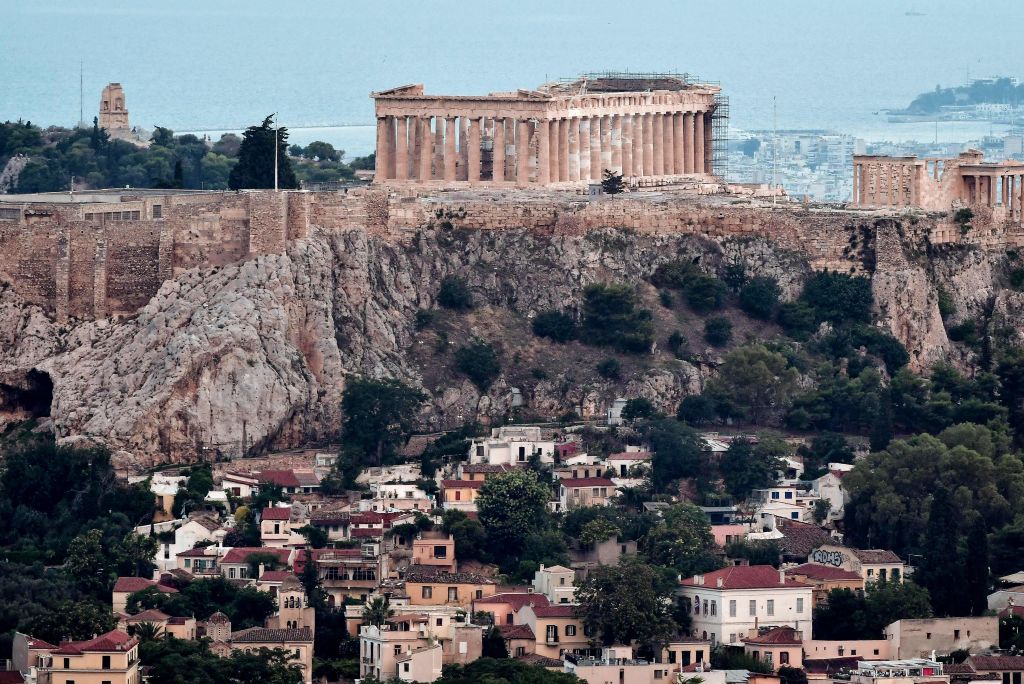Throughout history, civilizations have risen and fallen, leaving behind remarkable cities that have stood the test of time. These cities are not just relics of the past but thriving centers of culture, tradition, and human resilience. Some of the world’s oldest cities have been continuously inhabited for thousands of years, preserving their rich heritage while evolving with modern advancements. In this article, we will explore some of the most ancient cities on Earth, uncovering their hidden histories and their significance in shaping human civilization.
Exploring the Ancient Foundations of Civilization
The origins of civilization date back thousands of years, with many cities having stood the test of time, evolving into bustling metropolises while retaining their rich histories. These ancient cities offer a glimpse into humanity’s past, revealing secrets that have shaped our modern world. In this article, we delve into some of the world’s oldest continuously inhabited cities and uncover their hidden histories.
1. Jericho, Palestine – The Cradle of Civilization
Jericho, often regarded as the world’s oldest city, has been inhabited for over 11,000 years. Archaeological evidence suggests that the first settlements appeared around 9000 BCE. Known for its ancient walls and Neolithic structures, Jericho has been a critical center for early human development. The city’s strategic location near the Jordan River allowed early civilizations to flourish through agriculture and trade.
Hidden History of Jericho:
- The famous Walls of Jericho, constructed around 8000 BCE, are considered among the first large-scale defensive structures.
- Ancient irrigation systems in Jericho set the foundation for modern agricultural practices.
- The city played a vital role in biblical and Islamic history, being mentioned numerous times in sacred texts.
2. Byblos, Lebanon – The Birthplace of the Alphabet
Byblos, founded around 5000 BCE, is one of the longest continuously inhabited cities. The city played a crucial role in the Phoenician civilization, known for developing one of the earliest alphabets, which later influenced Greek and Latin scripts.
Hidden History of Byblos:
- The name “Byblos” is derived from the Greek word for papyrus, as the city was a major center for the trade of this early writing material.
- Byblos was a hub for Egyptian, Greek, and Roman cultures, blending diverse architectural and cultural influences.
- The Temple of Baalat Gebal, dedicated to the city’s patron goddess, reveals insights into early religious practices.
3. Aleppo, Syria – A Crossroads of Civilization
Aleppo’s history dates back to 5000 BCE, making it one of the oldest continuously inhabited cities. Its strategic location along the Silk Road made it a major trading hub for thousands of years, connecting the East and the West.
Hidden History of Aleppo:
- The Aleppo Citadel, a UNESCO World Heritage site, has been rebuilt multiple times over the centuries.
- The city was part of ancient Mesopotamian, Greek, Roman, and Islamic empires, each leaving a significant mark on its cultural heritage.
- The Great Mosque of Aleppo, originally built in the 8th century, showcases stunning Islamic architecture and has endured multiple reconstructions due to wars and earthquakes.
4. Damascus, Syria – The Oldest Capital in the World
Damascus, believed to have been continuously inhabited since 4000 BCE, is often referred to as the world’s oldest capital. It has been a cultural and political center throughout various empires, including the Arameans, Romans, and Umayyads.
Hidden History of Damascus:
- The city is home to the Umayyad Mosque, which houses the tomb of John the Baptist.
- Damascus was a pivotal city in early Islamic expansion and governance.
- The ancient Straight Street, mentioned in the Bible, runs through the heart of the old city and remains a vital thoroughfare.
5. Susa, Iran – The Heart of the Elamite Empire
Susa, dating back to 4200 BCE, was a key city in the Elamite, Persian, and Parthian Empires. It played a crucial role in shaping the history of the Middle East.
Hidden History of Susa:
- The city is mentioned in the Epic of Gilgamesh, one of the oldest literary works in human history.
- The Achaemenid Palace of Darius in Susa was a masterpiece of Persian architecture and governance.
- Susa was a major administrative center under the rule of the Achaemenid Empire.
6. Faiyum, Egypt – The Oasis of Ancient Egypt
Faiyum, continuously inhabited since 4000 BCE, is one of Egypt’s oldest cities and an essential part of the country’s agricultural history. Located near the Nile, it played a significant role in early Egyptian civilization.
Hidden History of Faiyum:
- The city is known for the Faiyum Portraits, the oldest realistic paintings of human faces.
- The Lake Moeris was an ancient engineering marvel, acting as a reservoir to support agriculture.
- The remains of the Labyrinth of Hawara, described by Herodotus, have intrigued archaeologists for centuries.
7. Varanasi, India – The Spiritual Capital of the World
Varanasi, dating back to 1800 BCE, is one of the oldest continuously inhabited cities in the world and holds deep spiritual significance in Hinduism, Buddhism, and Jainism.
Hidden History of Varanasi:
- The city is mentioned in Rigveda, one of the oldest Hindu scriptures.
- The Ghats of Varanasi, especially the Manikarnika Ghat, have been central to Hindu funeral rites for millennia.
- The Kashi Vishwanath Temple, dedicated to Lord Shiva, has been destroyed and rebuilt multiple times.
8. Plovdiv, Bulgaria – Europe’s Ancient Jewel
Plovdiv, continuously inhabited since 6000 BCE, is one of Europe’s oldest cities. The city has been ruled by Thracians, Romans, Byzantines, and Ottomans, making it a cultural melting pot.
Hidden History of Plovdiv:
- The Roman Amphitheater of Philippopolis is one of the best-preserved ancient theaters in the world.
- The city was originally a Thracian settlement, showcasing the deep history of the Balkan region.
- The Old Town of Plovdiv features well-preserved Ottoman-era buildings.
Conclusion
These ancient cities are more than just historical landmarks; they are living testaments to the endurance of human civilization. By preserving their legacies, we gain a deeper understanding of our collective past and ensure that future generations can continue to learn from these timeless centers of culture and heritage.


